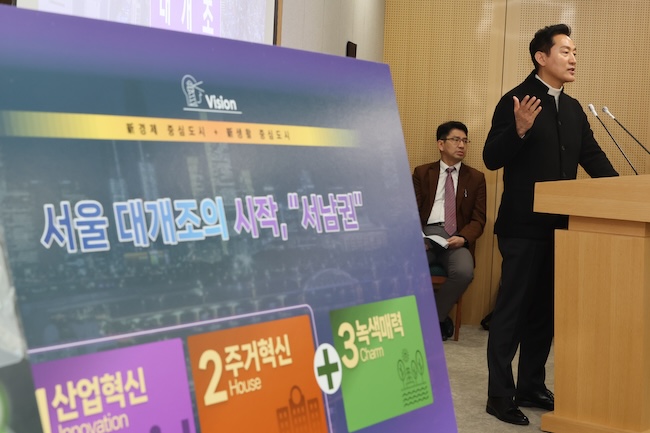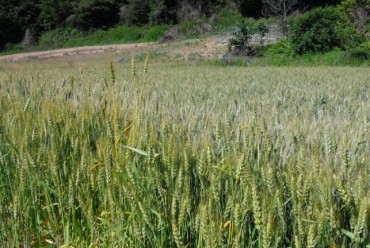
Seoul Mayor Oh Se-hoon announces a new future vision for the capital’s southwestern region in a media briefing on Feb. 27, 2024. (Image courtesy of Yonhap)
SEOUL, Feb. 27 (Korea Bizwire) — The Seoul city government on Tuesday announced a new future vision for its southwestern region, which is considered relatively underdeveloped and depressed compared to other regions of the capital.
The vision calls for transforming the region’s manufacturing-centered space into a future high-tech and convergence industrial cluster and adding leisure, culture and green sensibility to its old residential neighborhoods to create a future city where work, housing and pleasure are combined, the city government said.
The basic development plans for each district will be finalized within this year and the construction work will begin in stages starting next year, it said, adding the changed appearance of the southwestern region will be visible as early as 2026.
Seoul’s southwestern region, which comprises seven autonomous wards — Yeongdeungpo, Guro, Geumcheon, Gangseo, Yangcheon, Gwanak and Dongjak — led the nation’s modernization and industrialization in the 1960s and 1970s as the center of the consumer and manufacturing industries. But it is now considered a stagnant region.
First of all, the city government said it will revamp administrative regulations that have hindered the region’s urban development for decades, seeking to convert its semi-industrial area into a convergence space suitable for the rapidly changing industrial structure and diverse urban space demands.
Large facilities, such as the Guro Machine & Tools Shopping Center and the Guro Central Distribution Complex, will be transformed into core industrial bases that combine urban logistics and future business functions.
The city government said it will push to change the name of Gimpo International Airport to “Seoul Gimpo International Airport” in order to increase its brand value. At the same time, it will strengthen Gimpo’s international functions by asking the central government to increase the airport’s 2,000-kilometer restriction for international charter flights to 3,000 km.
To help commercialize urban air mobility (UAM), a vertiport will be built in Yeongdeungpo’s Yeouido district within this year and a UAM transfer center will be created at the Gimpo airport’s innovation zone.
In the housing sector, the city government said it will ease the floor area ratio for semi-industrial areas from 250 percent to a maximum of 400 percent to crease close-to-work residential areas with green space and convenience facilities.
It also vowed to expand pedestrian and green space networks in the southwestern region by connecting public parks and waterfront areas and offer various incentives to the private sector to maximize open green space.
(Yonhap)






